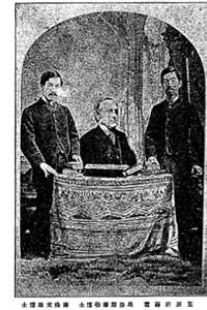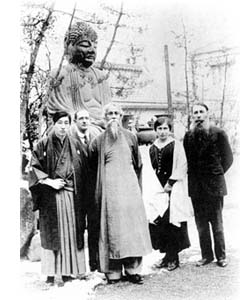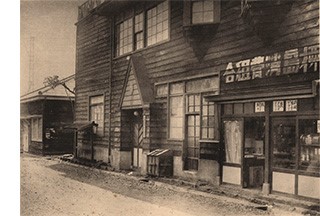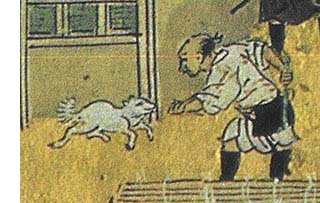Contact
Biographical Note
Research Interests
Current Research Projects
Publications
Deutsch
日本語
Biographical Note
Hans Martin Krämer (born 1972) studied History, Japanese Studies, and Philosophy at Heinrich Heine University (Düsseldorf, Germany), Sophia University (Tokyo, Japan), and Ruhr University (Bochum, Germany). After research stays at the University of Tokyo, Harvard University, and the International Research Center for Japanese Studies (Kyoto, Japan), he was assistant professor for Japanese Studies in Bochum. Since 2012, he is professor for Japanese Studies (History/Society) at Heidelberg University in Germany. His work has appeared in The Journal of Asian Studies, Monumenta Nipponica, Social Science Japan Journal, and a number of other German-, Japanese-, and English-language venues.
After several positions in self-administration (head of the Institute of Japanese Studies, director of the Center for East Asian Studies, speaker of the Center for Asian Studies and Transcultural Studies (CATS), and equal opportunities officer for the Philosophical Faculty), Krämer has been dean of the Philosophical Faculty since October 2023 (term of office: four years). Since 2019, he has been representing the Hans Böckler Foundation of the German Trade Union Confederation at Heidelberg University.
Full CV
Research Interests
The PhD dissertation, submitted in 2005 and published as a book in 2006, dealt with higher education reform in Japan between 1919 and 1952. While the conventional view holds that the reforms introduced by the US American occupation authorities after the end of World War II were epoch-making, this study stresses the preparatory character of reform discourse and practice before 1945, especially during the 1930s. As a result, common conceptions about prewar and wartime fascism and postwar democracy, especially the social values associated with these epochs, are called into question.
In 2012, Hans Martin Krämer submitted his Habilitation thesis on the subject of the birth of a modern concept of religion in Japan. Based on conceptual history, it is shown that the assumption of cultural dominance by the West, which emphasizes how “religion” in Japan has been and is shaped by a Christian Protestant understanding, is simplistic. An analysis of both the early modern prehistory of the neologism shūkyō 宗教 as well as debates on religion and state in the early Meiji period (between roughly 1868 and 1876) shows that the Japanese actors had their own interests and agendas, largely independent from the supposed semi-colonial dependence on the West.
In addition, long-standing research interests, manifested in publications in edited volumes and journals, center on four areas: 1. history of religion – how have religious groups (including, above all, minorities such as Christianity or Islam) acted as civil society actors vis-à-vis the state in modern Japan? 2. history of knowledge – how did modern knowledge formations (e.g. Marxism or Neo-Kantianism) emerge in (personal) exchange with the West? 3. social history – how did civil society groups such as trade unions contribute to the formation of the Japanese welfare state? 4. environmental history – how did human-animal relations develop between discourse and social reality from the early modern period to current animal protection legislation?
Current Research Projects
1. Mahāyāna in Europe: Japanese Buddhists and Their Contribution to Academic Knowledge of Buddhism in Nineteenth-Century Europe
According to current scholarship, the history of the European knowledge of Japanese Buddhism can be traced back to the World Parliament of Religions in 1893 or, more substantially, to the reception of D.T. Suzuki (Snodgrass 2003, McMahan 2008). More recently, Urs App has highlighted the central role of the Jesuit missionaries to Japan for European knowledge of Buddhism between the sixteenth and the eighteenth centuries (App 2010, 2012), but the role of East Asian Buddhism in the qualitatively new European discussion of Asian religions in the second half of the nineteenth century has (other than that of Indian Buddhism and Hinduism) hardly been illuminated.
Reception must here not be understood as a one-sided process initiated by Europe, but was instead marked by the active role of East Asians, in the early days mainly Japanese. The contacts of Shimaji Mokurai 島地黙雷 to Léon de Rosny (around 1870), of Nanjō Bun’yū 南条文雄 and Kasahara Kenju 笠原研寿 to Friedrich Max Müller (around 1880), and Takakusu Junjirō 高楠順次郎 and Fujishima Ryōon 藤島了穏 to Sylvain Lévi (around 1890) were decisive for European orientalists’ understanding of Mahāyāna Buddhism. In addition, the last three decades of the nineteenth century were also the period of the formation of the discipline of religious studies in Europe and thus the first period during which a “scientific” concept of religion was negotiated. The exciting question is thus how knowledge about East Asian religiosity mediated by East Asians was a factor in shaping the academic understanding of religion right from the beginning of the latter’s formation on.
This project will be funded by the German Research Foundation (DFG) with two positions for researchers starting in April 2017.
2. Spiritual Pan-Asianism: The Religious Dimension of a Political Movement in Early Twentieth-Century Japan
The role of Asianism or Pan-Asianism in finding a political and cultural identity for modern Japan has been researched intensively over the last few years (e.g. Esenbel 2004, Aydin 2007, Hotta 2007, Saaler and Koschmann 2007, Saaler and Szpilman 2011). Yet from a religious studies perspective it is striking how a methodological secularism has led scholars to ignore motives not reducible to economic or political rationality – despite the fact that many historical individuals and groups identified with religious movements or ideas, clearly not simply for strategic reasons. As an innovative research perspective, it is precisely this lack of a division between “political” and “religious” motives from the subjective perspective of historical actors which is of interest.
Examples for institutions include Japanese muslims, the secret society Kokuryūkai 黒竜会, the theosophical movement in Japan, Baha’i adherents, or a part of the new religious movements such as the Japanese Ōmotokyō 大本教 or the Chinese Shijie hongwanzi hui 世界紅卍字会. Individuals who combined political pan-Asian agendas with religious goals, many of whom were united in the anti-colonial struggle in India, include James Cousins, Paul Richard, Ōkawa Shūmei 大川周明, or Tanaka Ippei 田中逸平. The French Paul Richard, a former Protestant pastor, then a protagonist of spiritual and theosophical circles in Paris, before traveling to India where he met the political activist and later guru Sri Aurobindo, is a particularly interesting example, not in the least because it is so little known. In 1914 Richard traveled to Japan together with his wife, who was later to become the spiritual leader of the Sri Aurobindo Ashram; both stayed in Japan for four years, where they built extensive networks with anticolonial activists from all over Asia, at the same time never giving up a spiritual vision for a religiously united Asia. The first goal of this project is to collect the writings and papers of Richard, which are to be found all over Europe, India, Japan, and North America (where Richard spent the last years of his life), an effort which has already started with the help of collaborators from Japan, the United States, India, China, and several European countries.
3. Progressive Theory and Social Practice in a Working-Class Neighborhood: The Tōkyō Imperial University Settlement House, 1923–1938.
In 1923, progressive professors and student activists from Tōkyō University joined to build the Tōkyō University Settlement House in the impoverished industrial Honjo ward. In operation until 1938, the settlement sought to transcend mere social work and initiate an autonomous worker’s movement through providing the knowledge and self-awareness among the proletariat necessary to “eliminate social flaws through their own initiative” and “combat exploitation independently,” in the words of Law Professor and settlement initiator Suehiro Izutarō.
Although the settlement’s powerful financial supporters included the Imperial Household and it was considered a model of social work by the Home Ministry, many of its members were in fact Marxist-influenced students. The ambitious activities of the settlement were carried out through a broad program which included a labor school for factory workers providing night classes taught by professors and students and agitating for labor union participation. The labor school produced several prominent labor leaders and future Diet members. The settlement program further provided classes for adults and children, child care, a consumer cooperative, legal counseling from law professors and a free medical clinic. The settlement house also contained rooms for students to live among the proletariat and realize the ideal of “entering into the masses.”
4. The Social History of Human–Animal Relations in Early Modern Japan
Investigations into contemporary Japanese attitudes towards animals frequently highlight an irritating combination of a high degree of consumption of animal products (meat, leather, animal testing) and at the same time the almost entire lack of typical counter reactions to these (animal protection movement, vegetarianism). One attempt at explanation, prominently represented by the work of Richard W. Bulliet (
Hunters, Herders, and Hamburgers, 2005), argues that the lack of daily contact with livestock in the past has prevented the emergence of a sensibility towards problems involved in mass use of animals; at the very least, Japan has not witnessed the traumatic experience of the transition from a “domestic” period of living together with animals to a modern “postdomestic” phase of distance to production animals, whose numbers, however, have dramatically increased at the same time.
While this explanation is plausible in itself, it operates on the unquestioned assumption of a lack of intensive contact with animals in Japan before the nineteenth century. Beyond stating that there was no intensive mass animal farming in premodern or early modern Japan, however, the history of everyday experiences of Japanese with animals has in fact never been the subject of research. To what degree were animals actually used in everyday life, especially in farming? How close did humans and (production) animals live together? Due to a dearth of sources, these questions are not easy to answer. A first attempt will be made, however, by tapping agrarian manuals (nōsho). These were produced in great numbers during the Tokugawa Period (1603–1868), and although most of them do not treat animals as their main subjects, many do in fact contain chapters, passages, or brief remarks about animals. Based on the 72-volume edition Nihon nōsho zenshū 日本農書全集, such passages will be evaluated, before drawing on further textual and visual sources at a later stage of the project.
Publications
Important Publications
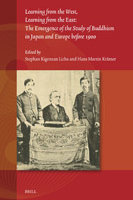 |
|
(2023) Learning from the West, Learning from the East: The Emergence of the Study of Buddhism in Japan and Europe before 1900. Leiden: Brill. Edited with Stephan Kigensan Licha.
ISBN: 9789004679542; 386 pages; 117,70 Euro
|
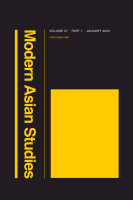 |
|
(2022) "An anti-secularist pan-Asianist from Europe: Paul Richard in Japan, 1916–1920". In: Modern Asian Studies, 57 (2), pp. 487–504.
Link to full text: PDF
Link to Journal:
Modern Asian Studies.
|
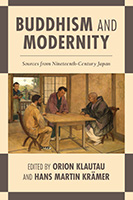 |
|
|
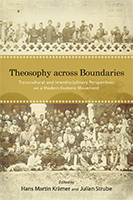 |
|
|
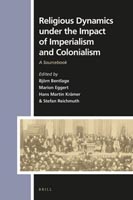 |
|
(2017) Religious Dynamics under the Impact of Imperialism and Colonialism: A Sourcebook. Leiden: Brill. Edited with Björn Bentlage, Marion Eggert und Stefan Reichmuth.
ISBN: 9789004325111; 566 Pages; 199,00 Euro
Reviews
Lorenz Trein in Religious Studies Review 43 No.3 (2017)
|
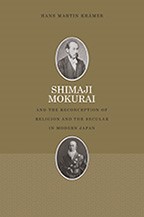 |
|
|
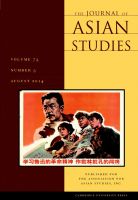 |
|
|
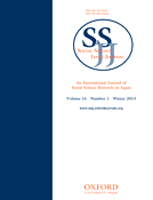 |
|
(2013) “Historical Origins of a Welfare-State Regime: Unemployment Protection in Japan, 1919–1949”. In: Social Science Japan Journal 16 (1), pp. 131–153.
|
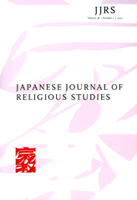 |
|
(2011) “Beyond the Dark Valley: Reinterpreting Christian Reactions to the 1939 Religious Organizations Law”. In: Japanese Journal of Religious Studies 38 (1), pp. 181–211.
Link to the text |
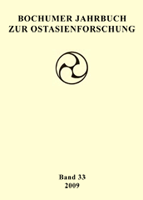 |
|
(2009) Editor of volume on the topic of Defining Religion, Defining Heresy in Modern East Asia (= Bochumer Jahrbuch zur Ostasienforschung 33).
ISBN: 978-3-86205-175-5; 297 pages; 50,00 Euro
Preview:
• Introduction ( PDF; 724 KB) |
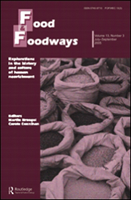 |
|
(2008) “‘Not Befitting Our Divine Country’: Eating Meat in Japanese Discourses of Self and Other from the Seventeenth Century to the Present”. In: Food and Foodways 16 (1), pp. 33–62.
Link to full text: PDF (2,8 MB) |
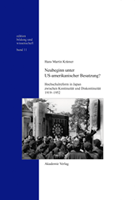 |
|
(2006) Neubeginn unter US-amerikanischer Besatzung? Hochschulreform in Japan zwischen Kontinuität und Diskontinuität, 1919–1952 (= edition bildung und wissenschaft, Bd. 11). Berlin: Akademie Verlag.
ISBN: 978-3-05-004278-8; 317 pages; 54,80 Euro
Reviews:
• Harald Fuess in Monumenta Nipponica 63, 1 (2008) ( PDF; 60 KB)
• Sven Saaler in Japanstudien 19 (2007) ( PDF; 804 KB)
|
 |
|
(2006) “The Prewar Roots of ‘Equality of Opportunity’: Japanese Educational Ideals in the Twentieth Century”. In: Monumenta Nipponica 61 (4), pp. 521–549.
Link to the text |
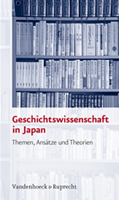 |
|
(2006) Geschichtswissenschaft in Japan. Themen, Ansätze und Theorien. Göttingen: Vandenhoeck & Ruprecht. Ed. with Tino Schölz and Sebastian Conrad.
ISBN: 978-3-525-36297-8; 243 Seiten; 19,90 Euro
Preview:
• Table of content ( PDF; 140 KB)
• Extract: Google Books
Reviews:
• Wolfgang Schwentker in Neue Politische Literatur 2/2009
• Klaus Vollmer in Asien 106 (2008) ( PDF; 284 KB)
• Reinhard Zöllner in Das Historisch-Politische Buch 55, 1 (2007)
• Harald Meyer in Asiatische Studien 41, 2 (2007) ( PDF; 872 KB) |
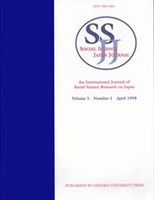 |
|
(2005) “Just Who Reversed the Course? The Red Purge in Higher Education During the Occupation of Japan”. In: Social Science Japan Journal 8 (1), pp. 1–18.
Winner “Social Science/Oxford University Press“-Price in 2005 ( statement of the Editorial Board)
Full text:  PDF PDF (128 KB) |
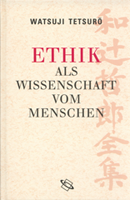 |
|
(2005) Translator of Watsuji Tetsurō, Ethik als Wissenschaft vom Menschen. Darmstadt: Wissenschaftliche Buchgesellschaft. Originaly published in 1934 under the title Ningen no gaku toshite no rinrigaku 人間の学としての倫理学.
ISBN: 978-3-534-17958-7; 176 pages; 39,90 Euro (out of stock)
Reprint: ISBN: 978-3-534-24035-7; 49,90 Euro
Reviews:
• Andreas Brenner in Frankfurter Rundschau, 22. August 2006
• Ernst Luther in Ethica. Wissenschaft und Verantwortung 14, 2 (2006) |
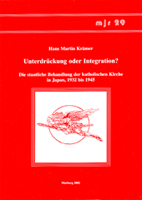 |
|
(2002) Unterdrückung oder Integration? Die staatliche Behandlung der katholischen Kirche in Japan, 1932 bis 1945. Marburg: Förderverein Marburger Japan-Reihe.
ISBN: 978-3-927607-52-5; 94 pages; 27 Euro
Reviews:
• Gerhard Krebs in NOAG 173–174 (2003) |
Further publications

